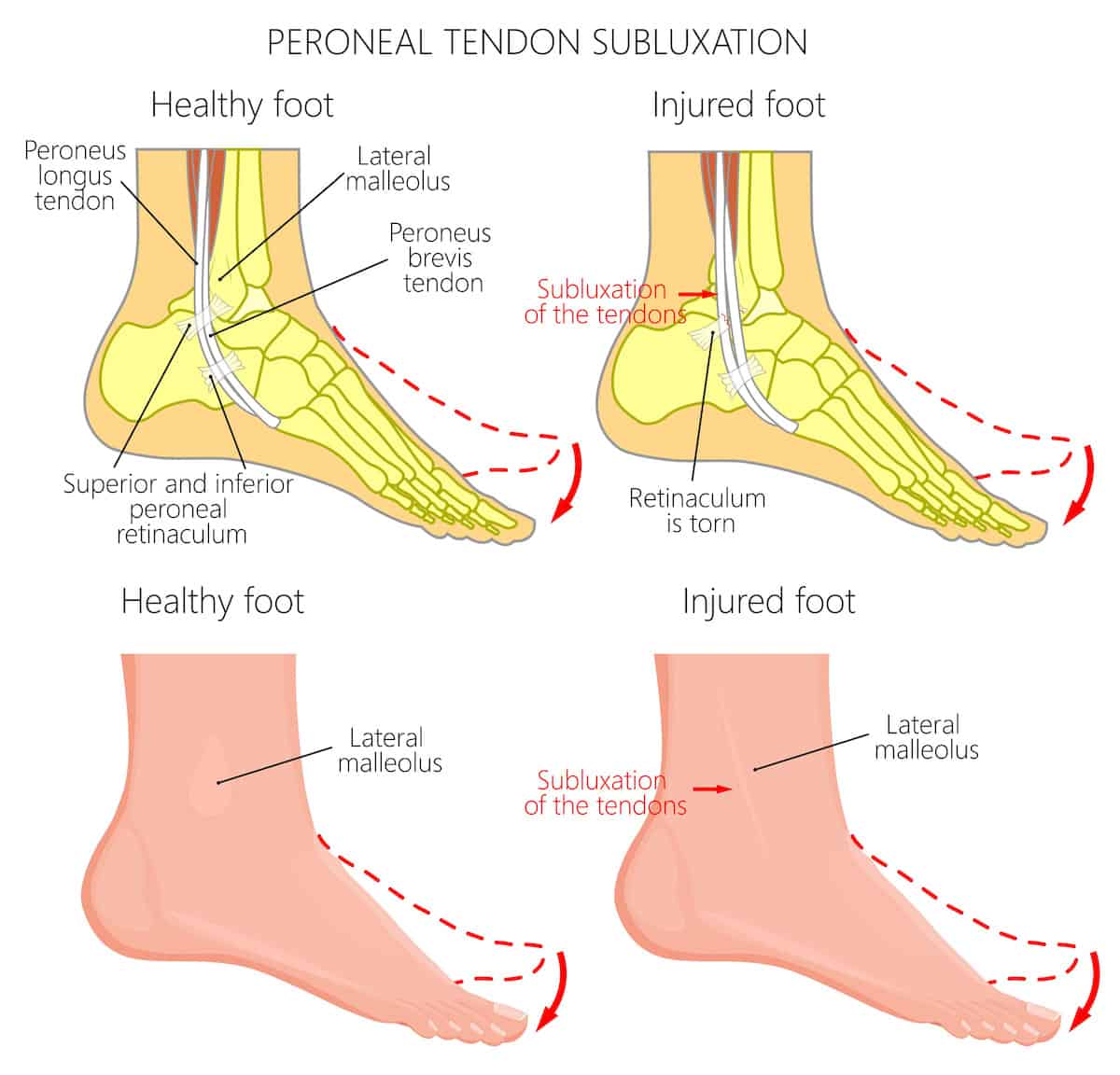Sprained Ankle
Read More >
Numerous conditions can cause ankle popping, and luckily for you, most of them are nothing to worry about as long as they are not painful. Throughout this article, we will explain the different conditions and anatomy that can cause ankle popping and detail which ones you should seek medical attention for but rest assured, this is the minority.
Around our ankle joint and most other joints in our body, we have a fibrous capsule, and within this capsule are our ligaments, gas and fluids. Gas is naturally produced within the joint, which moves in and out of the joint as we carry out mechanical activities throughout daily tasks such as walking, climbing the stairs or running. However, if we are inactive for periods, the gas can build up within the joint, and if we move our ankle, it can force out the gas at speed, causing an ankle-popping noise.
This is completely harmless and is the exact mechanism of when people ‘crack their knuckles’. It is worth keeping in mind that the more often and quicker we release this gas, the more it can refill within the joint at a faster rate, increasing our urge to force this movement, so try to resist it, and that urge should cease.
Tendons are tissue that connects muscle to bone, and throughout our body, there are small sacs of fluid called bursa that acts as cushions to prevent tendons from rubbing off of bones. Repetitive injuries such as ankle sprains and changes in our walking mechanics or footwear can alter how we move our ankle joints and cause the tendons to rub more frequently off of bones in their attachment areas.
We see this most often in the ankle joint with the Peroneal Tendons and the Anterior Tibialis Tendon when we rotate our ankles, creating a popping noise. The popping noise associated with this is generally harmless, and if there is no pain or discomfort but just audible, you don’t need to worry about it.

The Peroneal Tendons are located on the outer ankle, playing a vital role in the stabilisation of your ankle as your move. Two Peroneal Tendons wrap around the bone at the bottom of your ankle (lateral malleolus) and are held in place by a piece of connective tissue called a retinaculum.
Some individuals have no retinaculum; if you do, it can become overstretched from repetitive ankle sprains. In both cases, when contracting the Peroneal Tendons, they are not long held in their groove along the outer ankle bone and make a popping noise as they subluxate.
This action is known as Peroneal Tendon subluxation. You don’t need to be concerned if there is no pain but only an ankle-popping noise. However, in some cases, this can lead to pain and irritation, and these patients should consult a Physical Therapist for treatment.
During a severe ankle sprain (typically lateral ankle sprain), the Peroneal Tendon can be stretched and tear the superior retinaculum causing a Peroneal Tendon dislocation. When this occurs, there is often a loud crack or popping noise alongside an immediate onset of pain and swellings.
Walking on uneven surfaces can be painful, alongside turning the foot outwards (eversion). These injuries should be examined by a healthcare professional such as a Physical Therapist.
When you sprain your ankle, it can overstretch multiple tissues with one motion, and therefore, the popping noise can come from different sites. If you don’t have a history of ankle popping and this occurs, then it is likely that you have had a Peroneal Tendon Subluxation for the first time or that you have ruptured a ligament.
In some cases, you can rupture a ligament, and due to a release of adrenaline, you may not have any pain at the time or shortly after. However, we would expect swelling and pain to begin within 24 hours of the event.
Suppose you have a history of repetitive ankle sprains. In that case, the lateral ankle ligaments may have become chronically scarred and elongated. One final rolled ankle with a pop can be enough to tear the ligament completely. Still, due to the chronic state of the ligament tissue, there may not be any pain, and you can walk normally as the lateral ligaments are placed under very little stress when walking in straight lines.

At the end of every bone in our body is hard, shiny cartilage, whose function is to protect the bone from impact. The covering or cartilage is known as the osteochondral surface. The Talus bone is in the middle of the ankle and has the most cartilage cover of any bone in our body. The Talus plays a vital role in all weight-bearing activities, and it is therefore not uncommon to develop small tears in the chondral surface over time.
If this occurs and another bone moves over the tear, it can cause a popping or clicking noise. The ankle popping noise of an osteochondral lesion is usually felt deep within the ankle joint and is often painful. The same can be said for ankle arthritis, where there is a breakdown of the chondral surfaces within the ankle joint, leading to stiffness and popping or cracking noises with daily activities such as walking or climbing stairs.
This is not medical advice. We recommend a consultation with a medical professional such as James McCormack. He offers Online Physiotherapy Appointments.
Related Articles: